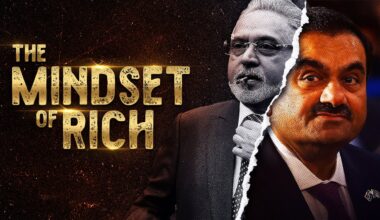Introduction
 7 Powerful Smart Saving Strategies to Transform Your Finances
7 Powerful Smart Saving Strategies to Transform Your Finances
Thinking about your family’s future can feel heavy. What if something happened to you tomorrow? Would your loved ones be financially protected? That’s exactly why choosing the right life insurance policies matters — not as an afterthought, but as a core plank in your financial plan.
Life insurance isn’t just about ticking a box. It’s about ensuring that if you’re no longer around, those you care about the most are still covered: the mortgage gets paid, the children finish school, debts don’t become a burden. With so many options out there, it’s easy to feel overwhelmed. That’s why this guide walks you through the top 5 life insurance policies that genuinely safeguard your future — explaining what they are, why they matter, how they differ, and how to pick one right for you.
Let’s get started.
What “life insurance protection” really means
Before we dive into the top policies, it’s helpful to clarify what we’re talking about when we say life insurance protection. At its heart, life insurance offers:
- A death benefit: a lump sum paid to your named beneficiary if you pass away while the policy is in force.
- A premium: what you pay (monthly, annually) to keep the policy active.
- Coverage length and features: how long the policy lasts, whether it builds value, how flexible it is.
There are broadly two major categories of life insurance: those that cover for a limited term (e.g., 20 or 30 years) and those that provide permanent coverage (for life). (Prudential)
Within those categories, various policy designs meet different needs. So when I say “top 5 life insurance policies” I’m pointing to five kinds of policies that are well-suited to different situations and that—if chosen wisely—offer real future protection.
Why choosing the right life insurance policy is so important
Here are a few reasons you want to get this right:
- If you pick a policy that doesn’t cover the right period or amount, you may leave gaps in protection.
- Premiums can add up — choosing something too expensive may strain your budget and lead to dropping the coverage.
- Features like cash value, flexibility, or riders (add-ons) matter depending on your goals.
- Your personal situation (age, health, dependents, debt) will shape what “good protection” means for you.
When you get it right, a policy becomes a cornerstone of your peace of mind. When you choose poorly, it can become a regret or a liability. That’s why we’ll walk through the five policies carefully, compare them, and help you decide what fits your life.
Top 5 Life Insurance Policies That Actually Protect Your Future
Here are the five types I recommend covering — along with how they protect you, what their pros and cons are, and who they’re best suited for.
1. Term Life Insurance Policy
What it is: A policy that covers you for a specified number of years (e.g., 10, 20, 30 years). If you die during that term, the death benefit is paid. If you outlive the term, coverage ends (unless you renew or convert).
Why it protects your future:
- It’s typically the most affordable way to buy substantial coverage when you have dependent responsibilities (young children, mortgage, etc.).
- It allows you to match the term to the years you’re most financially vulnerable (e.g., until kids are independent).
Pros & cons: - Pros: Lower premiums compared to many permanent options; straightforward.
- Cons: If you outlive the term, there may be no payout; renewal or conversion may cost much more.
Best for: Young families, people with large debts and limited budget, those wanting “income replacement” protection for a known period.
2. Whole Life Insurance Policy
What it is: A permanent policy that covers you for your whole life (as long as premiums are paid). It typically also has a cash-value component that grows over time. (NerdWallet)
Why it protects your future:
- Provides lifelong coverage, so your loved ones get the benefit whenever you pass away.
- The cash-value component gives you an additional savings/asset layer you may access (with caution).
Pros & cons: - Pros: Predictability (fixed premiums/death benefit in many cases), lifelong coverage.
- Cons: Much higher premiums than term; cash value growth is slow and fees may be higher.
Best for: People looking for lifelong protection, those wanting a policy that plays a role in estate planning or as part of a long-term financial plan.
3. Universal Life Insurance Policy
What it is: A type of permanent life insurance that offers more flexibility: you may adjust premiums (within limits), death benefit may change, and the cash-value account interest may vary. (Investopedia)
Why it protects your future:
- The flexibility allows you to adapt coverage to changing life circumstances (job changes, business ownership, etc.).
- So it can act both as a protection instrument and a financial planning tool.
Pros & cons: - Pros: Flexibility; potential for better alignment with evolving needs.
- Cons: More complexity; more risk if cash value doesn’t grow as expected or you reduce premiums too much.
Best for: Those who anticipate changes in income, business owners, people comfortable managing policy details and want a long-term asset component.
4. Variable Life / Indexed Universal Life Policy
What it is: These policies fall under the “permanent” umbrella and have a cash value tied to investment accounts (for variable life) or to an index (for indexed universal life). The value may grow (or decline) based on market performance.
Why it protects your future:
- Potential for higher growth in cash value gives more “bang” if you’re using it as a wealth accumulation and protection tool.
- The death benefit still acts as a protection layer.
Pros & cons: - Pros: Growth potential; dual function as protection + investment.
- Cons: Market risk; higher fees; may require more active oversight.
Best for: Individuals with higher risk tolerance, larger budgets, and who want their life insurance to play a major role in their investment/legacy planning.
5. Final Expense / Funeral or Burial Life Insurance Policy
What it is: A smaller permanent policy designed to cover end-of-life expenses (funeral, medical bills, small debts) rather than large income replacement or wealth transfer.
Why it protects your future:
- It ensures your family isn’t left with the burden of funeral costs or small debts if you pass.
- Good “last-mile” protection especially for those who may not qualify for larger policies or who have simpler needs.
Pros & cons: - Pros: Lower coverage amounts mean lower premiums; easier qualification (in some cases).
- Cons: Won’t cover large financial responsibilities; may cost more per unit of coverage than term or whole policies.
Best for: Older individuals, people whose children are independent, those whose main concern is ensuring no burden is left behind.
At-a-Glance Comparison Table
Here’s a table to help you compare the five policy types and see how they stack up across key criteria:
| Policy Type | Coverage Length | Cash Value Feature | Typical Premium Level | Ideal For |
|---|---|---|---|---|
| Term Life Insurance | Fixed term (10-30 yrs) | Generally none | Low-medium | Young families, budget-conscious |
| Whole Life Insurance | Lifetime | Yes (guaranteed) | High | Lifetime protection, long-term planning |
| Universal Life Insurance | Lifetime | Yes (flexible) | Medium to high | Flexible needs, changing income |
| Variable/Indexed Life Insurance | Lifetime | Yes (investment-tied) | High | High net worth, investment-oriented |
| Final Expense Life Insurance | Lifetime | Yes (smaller) | Low-medium | Covering funeral/debt, older individuals |
Use this table to ask: Which row fits me now? Which column is most important (premium, coverage length, cash value)?
How to Choose Which Life Insurance Policy Fits You
Picking the right policy isn’t just about the type — it’s about aligning policy features with your personal situation. Here are steps and considerations.
Step 1: Assess your personal protection needs
Ask yourself:
- Do I have dependents relying on my income?
- What debts would need to be covered if I die? (mortgage, business loans, personal debt)
- How long will my dependents need support? (until children are independent, spouse retirement age)
- What assets do I already have?
- Could I tolerate higher premiums for more features (cash value, investment aspect)?
Step 2: Decide your budget and prioritise
- How much premium can you comfortably pay without jeopardising other financial goals?
- If you pay too much and then skip premiums or cancel, you’ll lose protection.
- For example, if affordability is key, term life might be your best “protection” policy.
Step 3: Match policy type to your goal
- Need simple income-replacement for fixed period → look at term life.
- Want lifelong coverage and stable premiums → whole life.
- Expect your needs to change (business, children, second marriage) → universal life.
- Want growth in cash value and have higher tolerance for complexity → variable/indexed life.
- Just want to make sure funeral/debt is covered → final expense policy.
Step 4: Review policy features beyond the base
- Does the policy allow conversion (e.g., term→whole) without another medical exam?
- What are the riders (add-ons) available? (critical illness, accidental death, waiver of premium)
- Are premiums fixed or could they increase?
- How does the cash-value component work (if applicable)?
- What happens if you stop paying premiums?
- Are there exclusions (suicide clause, risky occupations)?
Step 5: Shop and compare quotes
- Get quotes from different insurers for the same death benefit and approximate age/health.
- Ask for illustrations (especially for permanent policies) showing cash value growth, premiums, death benefit.
- Check insurer ratings (financial strength) and policy reviews.
- Read the fine print.
- Consider working with a fee-only advisor if policy is complex.
Step 6: Revisit your coverage periodically
Life changes — marriage, children, business start, mortgage paid off, retirement. Your policy needs may evolve. What was perfect five years ago may no longer fit. Make it a habit to review your life insurance every few years.
Common Mistakes to Avoid When Choosing Life Insurance Policies
Here are pitfalls many people fall into — and how to avoid them.
- Choosing the cheapest policy without assessing protection adequacy. A very low premium term policy might not offer sufficient death benefit to cover your responsibilities.
- Failing to match coverage length to need. Buying term insurance for 10 years when your children will be dependent for 20+ years may leave you under-insured later.
- Overpaying for features you don’t need. Some people buy very complex permanent policies when they only need simple coverage now, which strains their budget later.
- Not reading exclusions or fine print. Some policies have limited payout periods, waiting periods, or exclusions for suicide in the first 2 years. (Investopedia)
- Neglecting to review the policy. Your needs change, and so does your budget. A policy that made sense at signing may become unsuitable.
- Putting off buying altogether. Age and health matter for premiums; the earlier you start (in many cases) the better your rates.
Case Studies: Real-Life Scenarios & How to Apply the Top 5 Policies
Let’s bring this home with three hypothetical (yet realistic) scenarios to illustrate how you might apply the above in practice.
Scenario A: Young couple, new mortgage, two young children
- Age: 30 & 28. Mortgage: 25 years. Dependents: 2 children aged 3 and 6.
- Need: Income replacement if one parent dies, cover mortgage, children’s schooling, spouse living expenses.
What fits: A high-death-benefit term life insurance policy (say 20-30 year term) is ideal. It gives affordable premiums while the risk period is highest. If budget allows, perhaps consider converting to permanent later.
Why: The main purpose is protection for a defined period of greatest need. Lifetime coverage may be less urgent and more expensive.
Scenario B: Mid-career professional, no children, lots of assets, wants legacy protection
- Age: 45. Children independent. Estate includes business, real estate.
- Need: Ensure lifelong death benefit, use policy as part of estate/legacy strategy, maybe cash value for tax-efficient withdrawals later.
What fits: A whole life or universal life policy with sufficient death benefit and cash-value features. Possibly variable/indexed if comfortable with investment risk and want higher growth.
Why: The need is not just income replacement but lasting coverage, asset growth, legacy building.
Scenario C: Retiree, children grown, only concern is not burdening family with funeral & debt
- Age: 65. Mortgage paid off, moderate savings, children independent.
- Need: Cover final expenses, small debts, ensure no financial burden left behind.
What fits: A final expense / burial life insurance policy — smaller death benefit but fulfilling the protective role.
Why: Purpose is narrow and timely: not major income replacement, just ensuring obligations are covered when you’re gone.
Final Thoughts
When it comes to life insurance policies that actually protect your future, the key isn’t picking the “most expensive” or “flashiest” policy. It’s picking the right policy for your unique needs — aligning coverage amount, term length, budget, and future goals.
Here are your take-away action steps:
- Assess your protection needs (dependents, debt, term).
- Decide what budget you can commit and for how long.
- Match one of the top policy types to your situation (term, whole, universal, variable/indexed, final expense).
- Read the details — no policy is side-effect-free.
- Review your coverage regularly as your life evolves.
By doing this, you move from “I hope I’m covered” to “I know I’m covered”. Your loved ones get peace of mind. You get peace of mind. And that’s the real protection a well-chosen life insurance policy offers.


